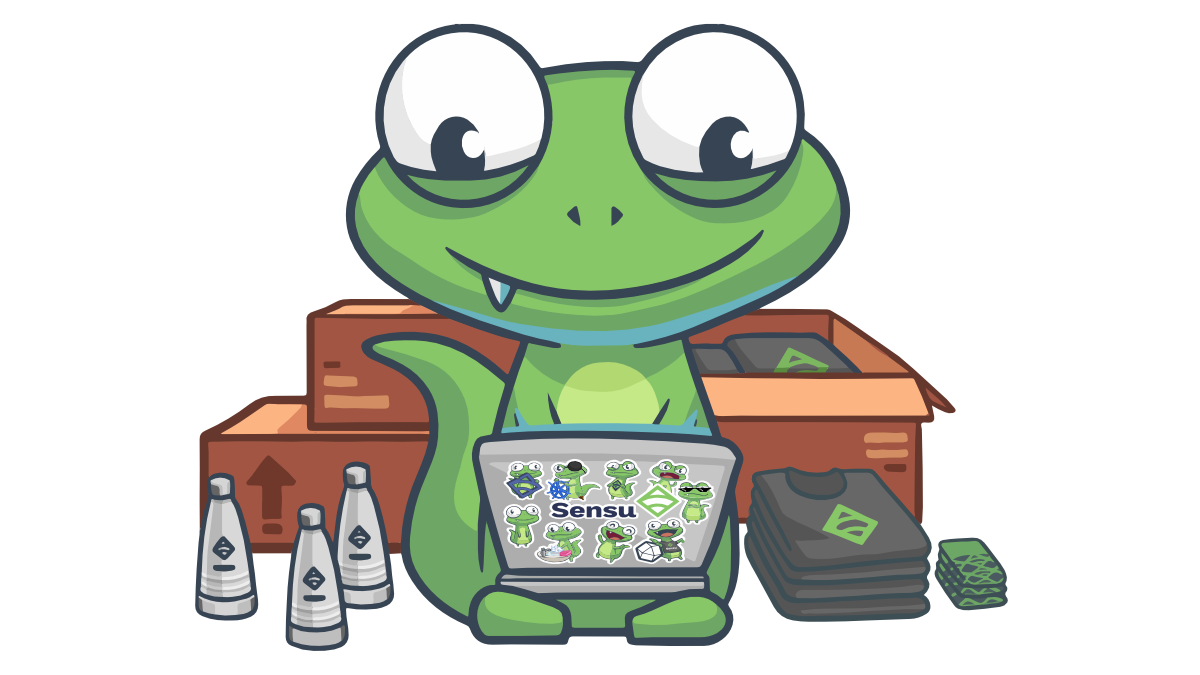Today is the day: Sensu Go is now in General Availability (GA)! Sensu Go features human-centered design by making it easier to use Sensu; we went from operations having to do the heavy lifting to creating a user-centric, self-service, and highly scalable product.

The agent in Sensu Go is smaller, which makes it easier to maintain total visibility by having Sensu everywhere. Additionally, the workflows are greatly improved: sensuctl, the new Sensu command-line interface, lets you deploy monitoring checks à la Kubernetes (e.g., sensuctl create -f http-service.yaml) along with deploying check plugins using Sensu’s newly released assets. What’s more, Sensu Go makes it easier to integrate metrics into your monitoring event pipeline, supporting aggregating metrics in a variety of industry standard formats such as Prometheus, StatsD, InfluxDB, and Nagios, to name a few. We baked all of these changes (and more!) into this latest, open source version of Sensu as part of our vision for empowering operators through sharing of tools, techniques, and knowledge.
Read on to learn what you can expect with this release, key features (👋hi multi-tenancy and built-in StatsD metrics collection), and how you can take Sensu Go for a spin.
🔥 The new hotness in Sensu Go
As SVP of Engineering Greg Poirier pointed out in May, Sensu Go is built to scale, offering a powerful API that gives you more flexibility when integrating Sensu into your existing infrastructure. This GA release gives our community a powerful foundation on which to build, with features like multi-tenancy included in our open source product.
Here are a few features we’re excited about:
- Updated Sensu UI. While Sensu users over the years have had success with many compatible dashboards (such as Uchiwa and Grafana), there was never an official dashboard available for all users. With Sensu Go, every Sensu install comes complete with the new Sensu UI, making it much easier for new users to get started. Simply install Sensu and log in!
- A versioned API, redesigned to be future forward and establish a stable API contract. We’ve architected the API in Sensu Go to last. It’s powerful enough to configure your entire Sensu Go instance and built to enable users who want to extend Sensu. We’ve heard that folks have always loved that Sensu is API-driven; now it’s even more so!
- A cuddly command-line interface. Easily interact with and manage all things Sensu with the
sensuctlcommand-line tool. Withsensuctl, you (and your users) can easily create checks, register agents, manage configuration, and more. It works great with configuration management tools too! Here’s how it works. - True multi-tenancy. Sensu Go introduces true multi-tenancy, enabling you to define and manage unique namespaces and their resources in a shared environment.
- Role-based access control (RBAC). Sensu’s RBAC is modeled after Kubernetes to provide seamless integration and a tested, respected model for authorization.
- Enhanced event filtering with JavaScript means powerful and performant JavaScript filtering for managing event flows. Further, you can utilize your JavaScript libraries with Sensu filters.
- Server and agent assets. Sensu Go now provides direct support for downloading and installing server plugins (handlers and mutators) and agent plugins (monitoring checks) with no additional tooling; i.e., no dependency on configuration management or custom Docker images. Agent assets were available for most of the early releases, but handlers and mutators assets are new, reducing runtime dependencies.
- Object metadata offers greater flexibility and a richer way of interacting with your data. By replacing custom attributes in Sensu 1.x. (which were less than intuitive), this approach will make it easier for new users — allowing new workflows to be developed around a simple convention.
- StatsD metrics collection. You can easily hook up your StatsD metrics into the Sensu monitoring event pipeline, outfitting you with an industry-standard metric pipeline all ready to go. Check out the guide for more info.
- Embedded transport and datastore. We’ve replaced RabbitMQ and Redis with an embedded transport and etcd datastore, greatly simplifying the installation process and making it easier to get started with Sensu than ever before.
🔜 Exciting releases through Q1 (and beyond!)
We’re releasing a number of exciting new features throughout next year. Having built an awesome foundation in Sensu Core, our roadmap beyond GA consists of building on that foundation to provide Enterprise-only features critical to larger organizations.
Here are key Enterprise-only features to look out for in Q1 2019:
- Lightweight Directory Access Protocol (LDAP) integration, a security requirement for most enterprises, offers organizations a security team-approved way to interact with Sensu. If you use an LDAP driver (like Active Directory, for example), you can use those credentials to authorize and log in to Sensu (and keep your InfoSec team happy).
- The Sensu UI: now a one-stop shop. Our updated Sensu UI greatly reduces operator burden by making it easy to support other teams (without the costly ramp-up and support time). We’re simplifying and easing the process of spinning up dashboards and building in the ability to include additional modules for extra visibility and data cohesion.
Here’s a quick drill down of the updates:
- Control Sensu from the UI for simplified user role management — without having to interact with
sensuctl— making it easier for admins managing users and roles. - Customizations! Configurable elements in the UI let you plug and play configurable data modules to enable additional layers of visibility and high-priority data for your stack. Instead of trying to figure out how to build a dashboard to rule them all, we’re giving you the keys to kingdom. Take the types of data you care about and simply add them to your dashboard via configurable UI modules.
- Resource management from the UI. With resource management in the UI, you’ll be able to create and edit resources (events, entities, and checks) from the UI without having to go through
sensuctl.
We’ll share what’s coming (and when) as releases dates draw closer via Twitter, email, and our Community Slack and Forum.
🗞️ Word on the street
We can’t emphasize enough the importance of the Sensu Community when it comes to developing our products and features. In fact, community feedback, like the need for reducing operator burden when onboarding other teams, directly led us to developing the updated UI for Sensu Go. A special thanks to our many early adopters and wider community for sharing their feedback. We invite you to continue this journey with us, whether that’s in Slack, Discourse or one of our Community Chats.
Our users are saying great things about Sensu Go: folks love that overall it’s easier to get started, has fewer moving parts, and fits perfectly in their cloud-native environments. Plus, people are thrilled about Sensu Go’s compatibility with Kubernetes, which complements their current or future containerized infrastructure (see this post from Kris Zentner at Microsoft Research). At Sensu Summit 2018, we heard from the community on what they’re excited about in the next version of Sensu (watch videos of the talks), and our friends at Chef previewed Sensu Go’s possibilities with a live Habitat + Sensu demo.
Here’s what John Kerry, Software Developer at NCR, had to say:
“At NCR, it’s critical that we operate at the speed that restaurants require, so we needed a monitoring solution that would empower us to move as fast as needed. With Sensu Go, we have the power to build a pipeline that enables restaurants to quickly (and safely) gain intelligence into their systems. That, coupled with the fact that it’s designed with Kubernetes in mind, makes Sensu Go a perfect complement to our workflows.”
Have your own Sensu Go stories to share? Send us a note at community@sensu.io and we’ll get the word out.
🚗 Try it out
We hope you’re as excited about Sensu Go as we are! Here are a few ways to get started:
- Download the Sensu sandbox (Go edition!) which includes its very own lesson plan.
- Chat about Sensu Go in our Community Slack (#sensu-go) and Forum.
- Follow the docs to install Sensu Go.
Thanks for joining us on this journey as we build a better Sensu and empower operators everywhere. We can’t wait to share what’s next. In the meantime, happy monitoring!




